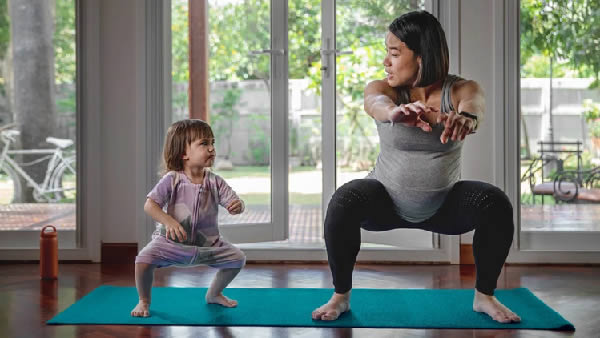
Laxity in Pregnancy is what may be causing you those aches and pains
The Role of the Relaxin Hormone
As discussed previously on the blog, pregnant people undergo some major changes in their bodies, including producing different hormones that play various roles during pregnancy. One hormone that affects the musculoskeletal system in a pregnant person’s body is called relaxin.
Relaxin is a hormone produced by the corpus luteum (an endocrine gland made in the ovary when a follicle has matured and released an egg during ovulation) and the placenta (an organ developed in the uterus during pregnancy that provides oxygen and nutrients to your baby). Relaxin inhibits uterine activity and helps relax the pelvic joints so your hips can widen in preparation for birth. Relaxin peaks during the first trimester. However, relaxin can also contribute to laxity in other areas of the body during pregnancy, not just the pelvis.
What is laxity and how it affects the pregnant body
When one becomes pregnant, joint laxity from relaxin begins around six weeks of pregnancy and becomes more noticeable by week 12. The main area of laxity is centered in the pelvis, which is how the body begins to prepare for birth. In particular, the main joints of the pelvis- the pubic symphysis and the sacro-iliac joints are affected, which cause pelvic pain including pubic symphysis pain and SI joint pain.
Other areas of the body may be affected from joint laxity from relaxin, including the shoulders, hips, spine, as well as the feet and ankles. Pain can be more apparent in people who have underlying orthopedic issues before pregnancy, those who lack muscular strength before pregnancy, and those who have underlying hypermobility issues.
What you can do about laxity while pregnant
Strengthen and Stabilize
You can’t stop the body from creating and releasing relaxin during pregnancy, however you can strengthen and stabilize the body through exercise to support your joints.
Avoid overstretching
While stretching the back, glutes, hips, and legs can be beneficial for back and pelvic pain during pregnancy, be careful not to overstretch joints, please consult with a physical therapist in order to determine if you are stretching too much.
See a Pelvic Floor physical therapist
A trained pelvic floor PT will help you determine safe stability and strengthening exercises for you to do during pregnancy, contact Femina PT for more information and to schedule today.
References:
https://www.britannica.com/science/corpus-luteum
Irion, J. M. (2013). Womens health in physical therapy. La Vergne, TN: Cram101, Inc.
https://www.mayoclinic.org/healthy-lifestyle/pregnancy-week-by-week/in-depth/placenta/art-20044425
**This information is for educational purposes only and is not intended to replace the advice of your doctor.
